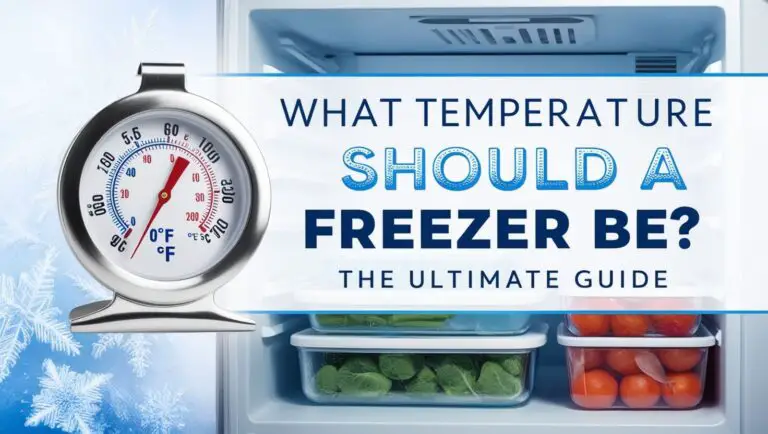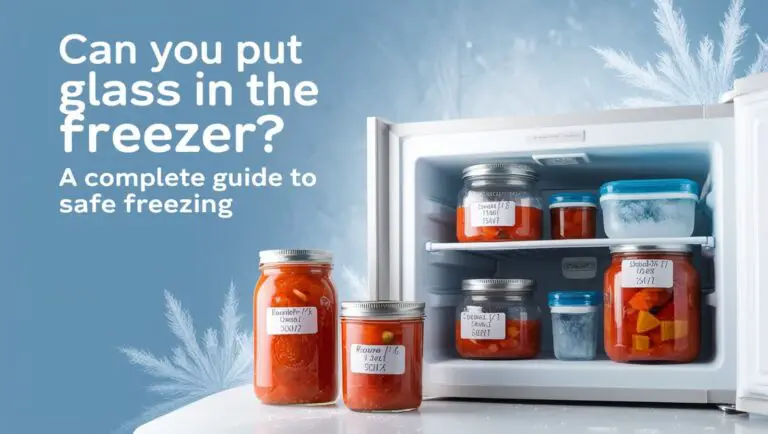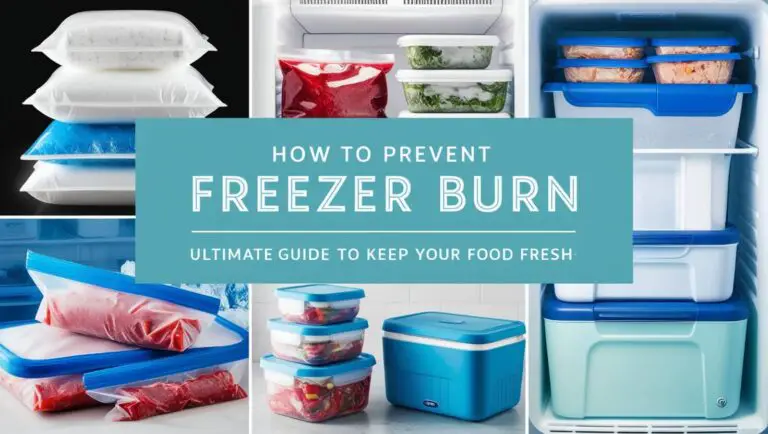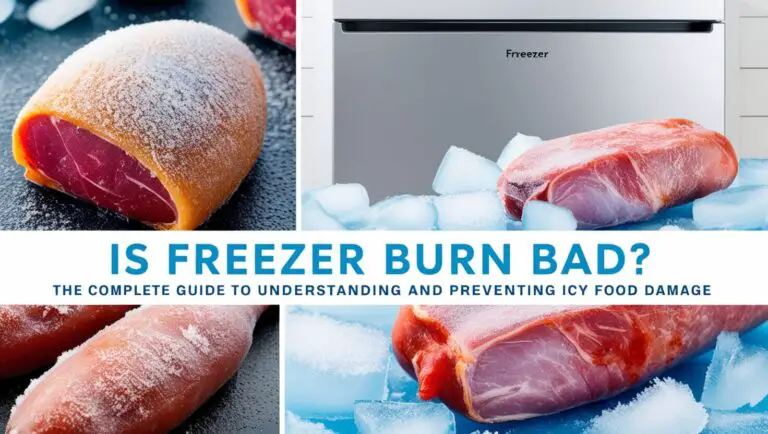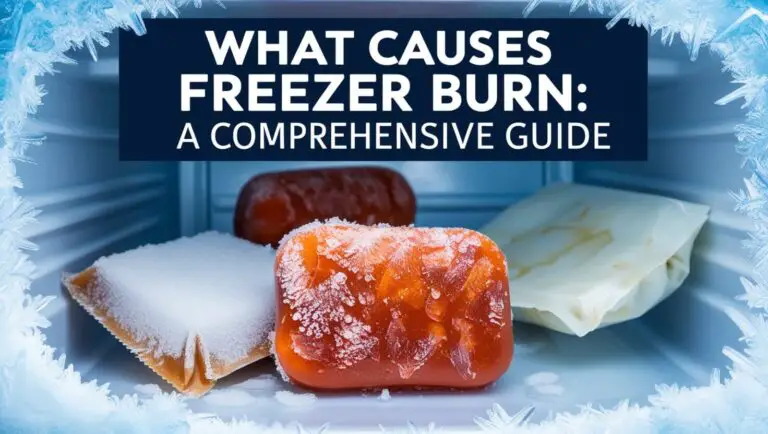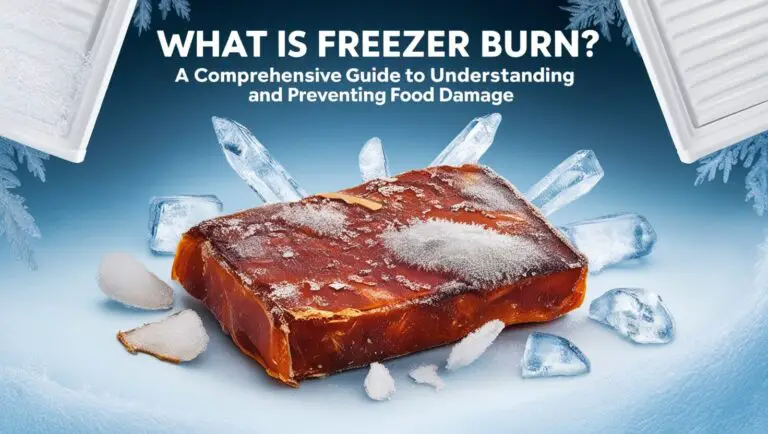Can You Eat Freezer Burned Food? The Ultimate Guide
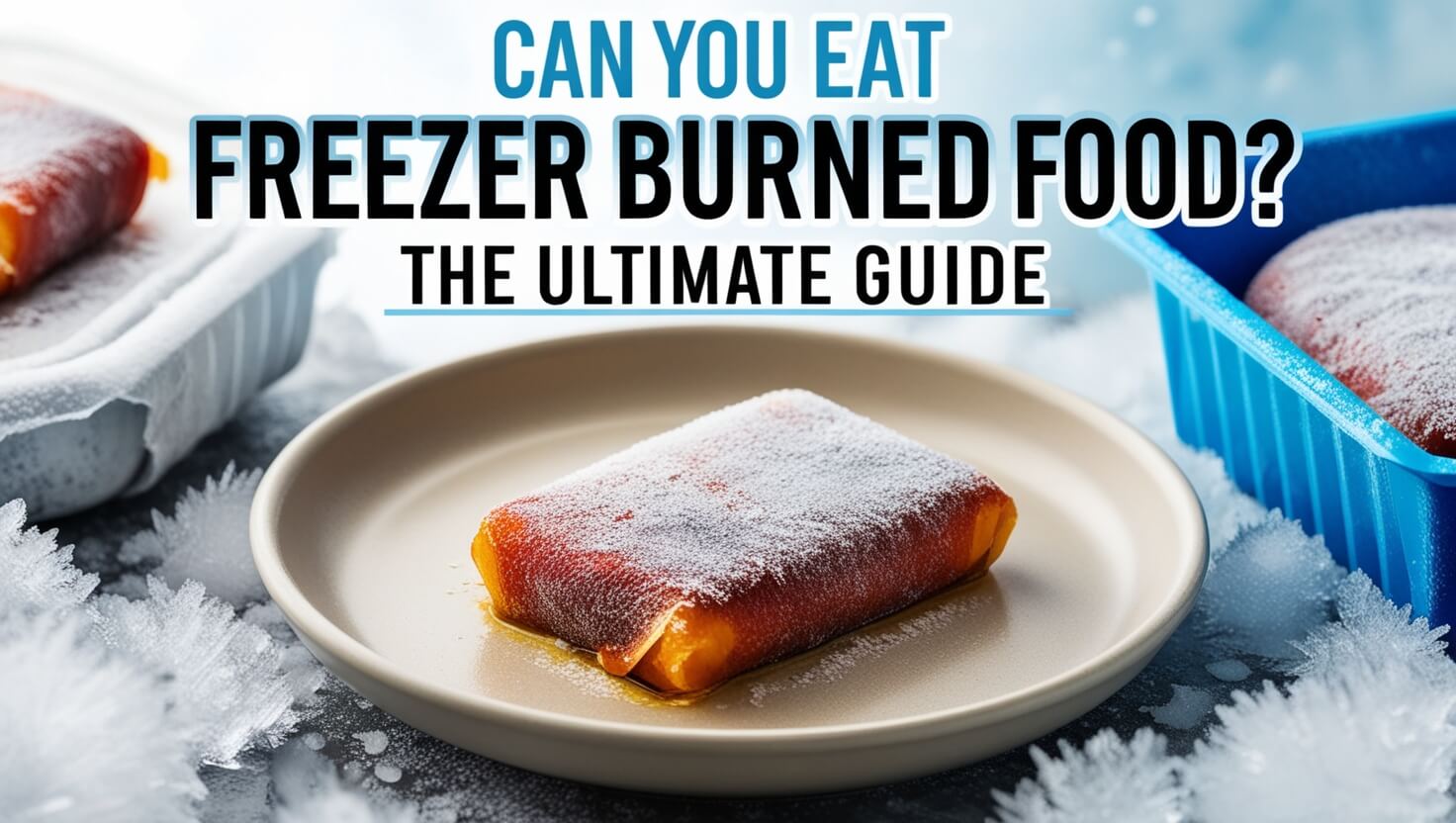
Have you ever pulled a package of meat from your freezer, only to find it covered in ice crystals and discolored patches? If so, you’ve encountered freezer burn. But can you eat freezer burned food? The short answer is yes, it’s generally safe to eat freezer burned food. However, there’s more to consider when it comes to quality, taste, and nutrition. In this comprehensive guide, we’ll explore everything you need to know about freezer burn, from its causes to prevention methods.
What is Freezer Burn?
Freezer burn is a common occurrence in frozen foods that results from moisture loss and oxidation. It’s not a sign of spoilage or bacterial growth, but rather a quality issue that affects the taste, texture, and appearance of food.
The Science Behind Freezer Burn
Freezer burn happens when moisture from the food evaporates and turns into ice crystals on the surface. This process, called sublimation, occurs when water moves from a solid state directly to a gas, bypassing the liquid phase. As moisture leaves the food, it’s replaced by air, which causes oxidation and dehydration.
The main culprits behind freezer burn are:
- Temperature fluctuations
- Exposure to air
- Improper packaging
- Extended storage time
How Freezer Burn Affects Different Foods
While all frozen foods can experience freezer burn, some are more susceptible than others:
- Meats and poultry: Develop dry, leathery patches
- Fish: Becomes tough and loses flavor
- Fruits and vegetables: Become dry and shriveled
- Ice cream: Forms large ice crystals and becomes grainy
Identifying Freezer Burned Food
Knowing how to spot freezer burn is crucial for making informed decisions about your frozen foods.
Visual Signs of Freezer Burn
Look for these telltale signs:
- Grayish-brown spots on meats
- White, dry patches on fruits and vegetables
- Ice crystals on the food’s surface
- Discoloration or fading
Texture Changes in Freezer Burned Food
Freezer burned food often feels:
- Dry and leathery (especially meats)
- Tough or rubbery
- Shriveled (fruits and vegetables)
Smell and Taste Alterations
While freezer burn doesn’t make food unsafe, it can affect odor and flavor:
- Meats may have a slightly metallic or oxidized smell
- Fruits and vegetables might lose their fresh aroma
- Overall flavor can be bland or “off”
Is It Safe to Eat Freezer Burned Food?
The good news is that freezer burned food is generally safe to eat. Let’s break down the safety aspects and nutritional considerations.
Food Safety Considerations
According to food safety experts, freezer burn doesn’t make food unsafe to eat. The process of freezer burn doesn’t create an environment for bacterial growth, which is the main concern when it comes to food safety.
However, it’s important to note that freezer burn can sometimes mask other issues. If the food was improperly stored or allowed to thaw and refreeze, there could be safety concerns unrelated to freezer burn itself.
Nutritional Impact of Freezer Burn
While freezer burn doesn’t directly cause nutrient loss, the dehydration process can affect some nutrients:
- Water-soluble vitamins (like vitamin C) may decrease slightly
- Overall nutrient density might increase due to moisture loss
- Protein and fat content remain largely unaffected
When to Toss Freezer Burned Food
Although freezer burned food is safe, there are times when it’s best to discard it:
- Severe freezer burn affecting a large portion of the food
- Off-odors unrelated to normal freezer burn
- Signs of thawing and refreezing (ice crystals inside packaging)
- Extended storage beyond recommended freezer times
How Freezer Burn Affects Food Quality
While safety isn’t a major concern with freezer burn, quality is another story. Let’s explore how freezer burn impacts the eating experience.
Taste and Texture Changes
Freezer burn can significantly alter the palatability of food:
- Meats become dry and tough
- Fruits and vegetables lose their crisp texture
- Ice cream becomes grainy and develops ice crystals
These changes occur because the dehydration process removes moisture from the food, affecting its cellular structure.
Color Alterations in Freezer Burned Food
Freezer burn often causes noticeable color changes:
- Red meats may turn brown or gray
- Fruits and vegetables can become pale or discolored
- Ice cream might develop white or grayish patches
These color changes are primarily due to oxidation and don’t necessarily indicate spoilage.
Impact on Cooking and Preparation
Freezer burned food can be challenging to work with in the kitchen:
- Meats may cook unevenly due to dry patches
- Fruits and vegetables might lose their original texture when thawed
- Baked goods can become dry and crumbly
Salvaging Freezer Burned Food
Don’t let freezer burn discourage you from using your frozen foods. Here are some tips for making the most of freezer burned items.
Trimming and Cutting Techniques
For meats and larger food items:
- Thaw the food in the refrigerator
- Once partially thawed, cut away freezer burned areas
- Use the unaffected portions as normal
Cooking Methods for Freezer Burned Meats
Try these techniques to improve the taste and texture of freezer burned meats:
- Slow cooking: Use a crockpot or low oven temperature
- Marinating: Soak in flavorful liquids to add moisture
- Braising: Cook in liquid to help tenderize tough portions
Using Freezer Burned Fruits and Vegetables
Get creative with freezer burned produce:
- Blend into smoothies
- Use in soups or stews
- Incorporate into baked goods
Preventing Freezer Burn
The best way to deal with freezer burn is to prevent it from happening in the first place.
Proper Food Packaging Techniques
Use these methods to protect your frozen foods:
- Remove as much air as possible from packaging
- Use freezer-specific bags or containers
- Double-wrap foods prone to freezer burn
- Consider using a vacuum sealer for long-term storage
Optimal Freezer Temperature Settings
Maintain the right temperature to minimize freezer burn:
- Set your freezer to 0°F (-18°C) or below
- Use a freezer thermometer to monitor temperature
- Avoid frequent or prolonged freezer door openings
Organizing Your Freezer for Better Food Preservation
A well-organized freezer can help prevent freezer burn:
- Group similar items together
- Use clear containers for easy identification
- Rotate foods to use older items first
- Leave space between items for air circulation
Freezer Burn in Different Food Types
Let’s take a closer look at how freezer burn affects various food categories.
Meats and Poultry
Meats are particularly susceptible to freezer burn due to their high moisture content:
- Red meats develop grayish-brown, leathery patches
- Poultry may show white, dry areas
- Ground meats can become discolored and develop ice crystals
To minimize freezer burn on meats:
- Wrap tightly in freezer paper or plastic wrap
- Place wrapped meat in a freezer bag, removing excess air
- Use within 3-6 months for best quality
Fish and Seafood
Fish and seafood are delicate and can quickly develop freezer burn:
- Look for white, dry patches on the surface
- Texture may become tough or rubbery
- Flavor can become bland or “fishy”
Tips for freezing fish and seafood:
- Wrap in moisture-proof packaging
- Freeze as soon as possible after purchase
- Use within 3 months for optimal quality
Fruits and Vegetables
Fruits and vegetables with high water content are prone to freezer burn:
- They may become dry and shriveled
- Color can fade or become dull
- Texture often becomes mushy when thawed
To protect fruits and vegetables:
- Blanch vegetables before freezing
- Use syrup or sugar packs for fruits
- Package in airtight containers or freezer bags
Dairy Products and Ice Cream
Dairy products, especially ice cream, are notorious for developing freezer burn:
- Ice cream becomes grainy and develops large ice crystals
- Cheese can become crumbly and lose flavor
- Milk may separate and develop off-flavors
Prevent freezer burn in dairy products by:
- Keeping ice cream tightly covered
- Using smaller containers to minimize air exposure
- Consuming within 1-2 months of freezing
Myths and Facts About Freezer Burn
There are many misconceptions about freezer burn. Let’s separate fact from fiction.
Common Misconceptions
Myth 1: Freezer burn makes food unsafe to eat. Fact: Freezer burn is a quality issue, not a safety concern.
Myth 2: Freezer burn happens only in old freezers. Fact: Even new, efficient freezers can cause freezer burn if food is improperly stored.
Myth 3: Freezer burn occurs only on the surface of food. Fact: While it often starts on the surface, freezer burn can penetrate deeper into food over time.
Scientific Truths About Freezer Burn
- Freezer burn is caused by sublimation, not bacterial growth.
- The process of freezer burn doesn’t create harmful compounds.
- Freezer burn can occur at any temperature below freezing, but happens more slowly at lower temperatures.
The Economics of Freezer Burn
Understanding the economic impact of freezer burn can help you make informed decisions about your food storage practices.
Food Waste and Cost Implications
Freezer burn contributes to food waste in several ways:
- Discarded food due to quality issues
- Reduced portion sizes from trimming affected areas
- Lower perceived value of frozen foods
To minimize economic loss:
- Buy only what you can reasonably use before freezer burn sets in
- Use proper storage techniques to extend freezer life
- Plan meals around frozen foods to ensure timely use
Balancing Food Safety and Frugality
While it’s important to be mindful of food waste, safety should always come first:
- Use your best judgment when deciding whether to use freezer burned food
- Consider the cost of potential foodborne illness versus the cost of discarding food
- Invest in quality storage containers and equipment to prevent freezer burn
Expert Opinions on Consuming Freezer Burned Food
Let’s hear from the professionals about eating freezer burned food.
Insights from Food Scientists
Food scientists generally agree that freezer burned food is safe to eat:
- Dr. Elizabeth Andress, a food safety specialist at the University of Georgia, states that freezer burn doesn’t make food unsafe, but it can affect quality.
- The U.S. Department of Agriculture (USDA) confirms that freezer-burned food remains safe to eat.
Nutritionists’ Perspective on Freezer Burn
Nutritionists offer insights on the nutritional aspects of freezer burned food:
- While some nutrients may be lost due to dehydration, the overall nutritional value remains largely intact.
- Freezer burn doesn’t significantly affect protein or fat content.
- Water-soluble vitamins may decrease slightly, but this loss is minimal compared to other cooking and storage methods.
Freezer Burn and Food Storage Best Practices
Proper food storage is key to preventing freezer burn and maintaining food quality.
Ideal Freezing Methods
Follow these steps for optimal freezing:
- Cool hot foods before freezing to prevent temperature fluctuations
- Package foods in portion sizes you’ll use
- Remove as much air as possible from packaging
- Freeze foods quickly by spreading them out in the freezer
Labeling and Rotation Strategies
Stay organized with these tips:
- Label all frozen foods with contents and date
- Use a “first in, first out” system
- Keep an inventory list to track frozen foods
- Set reminders to use foods before they develop freezer burn
Thawing Techniques to Minimize Quality Loss
Proper thawing helps maintain food quality:
- Thaw in the refrigerator whenever possible
- Use cold water thawing for faster results
- Avoid thawing at room temperature to prevent bacterial growth
- Cook foods immediately after thawing for best texture and flavor
Let’s Wind UP: Making Informed Decisions About Freezer Burned Food
In answering the question “Can you eat freezer burned food?“, we’ve learned that while it’s generally safe, there are quality considerations to keep in mind. Freezer burn is a common issue that affects the taste, texture, and appearance of frozen foods, but it doesn’t make them unsafe to eat.
Key takeaways:
- Freezer burned food is safe to eat but may have quality issues.
- Proper packaging and freezer organization can prevent freezer burn.
- Some freezer burned foods can be salvaged through trimming or creative cooking methods.
- When in doubt about the safety or quality of freezer burned food, it’s best to discard it.
By understanding freezer burn and implementing good freezer management practices, you can extend the life of your frozen foods, reduce waste, and ensure you’re always prepared with safe, high-quality ingredients for your meals.
Remember, while freezer burn isn’t a safety issue, it’s always important to use your best judgment when it comes to food. If something doesn’t look, smell, or taste right, it’s better to err on the side of caution and throw it out. With the knowledge you’ve gained from this guide, you’re now equipped to make informed decisions about your frozen foods and keep your freezer stocked with delicious, high-quality ingredients.

